Aviation Safety Monitor Weekly Report for the Week Ending December 28, 2024
In today’s Weekly Aviation Safety Report we review safety margins during 2024 and summarize what we learned from our reporting. The broad trends over the year are clear: safety margins were moderate in late February and March, followed by very good metrics through the end of the summer, but then succeeded by a steady but erratic deterioration in safety margins through the end of December. Measured by buffer encroachment durations, safety margins for the month of December are the lowest recorded since we started reporting in February. This trend is consistent with that observed in previous years, and what remains to be seen is whether safety margins in the winter of 2024-2025 will decline as much as during the winter of 2022-2023. Figure 1 shows the sharp uptick in encroachment durations in December, with many hourly averages well above the 90th percentile.
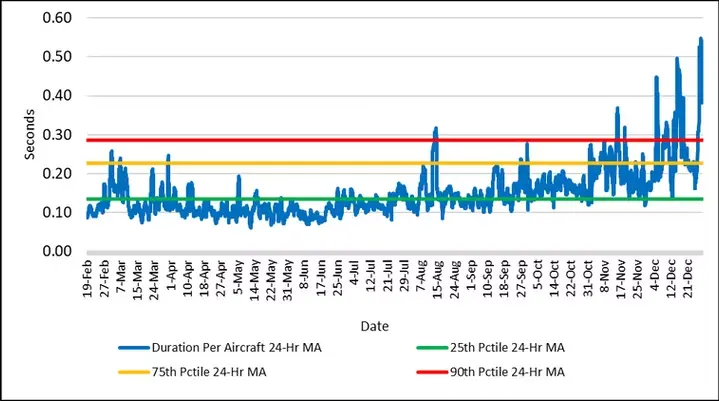
Figure 1. Moving Average Hourly Encroachment Duration Per Aircraft From February 18, 2024 Through December 28, 2024
After analyzing data back to April 2022, we can confidently report that the primary drivers of reduced safety margins over longer time periods (weeks and months) are the poor meteorological conditions (low ceiling and reduced visibility) and reduced daylight hours. Time-of-day variations are strongly affected by traffic density in addition to meteorological conditions and nighttime hours. We will describe those findings in a future special report by the Aviation Safety Monitor.
Weekly Safety Margin Update. Every Monday Robust Analytics reports on safety margins at 26 United States airports. With this Aviation Safety Monitor Weekly Report, Robust Analytics offers the aviation community timely assessments of changing safety margins and safety-related events. Dates and times are tracked in UTC and the week ends at midnight every Saturday. This week’s report includes data through 2400 UTC on December 28, 2024.
For New Readers: Please read our article “Did Safety Degrade in the National Airspace System in the Winter of 2022-2023?” that applies our methods and data to examine whether safety margins decreased during the events of winter 2022-2023.
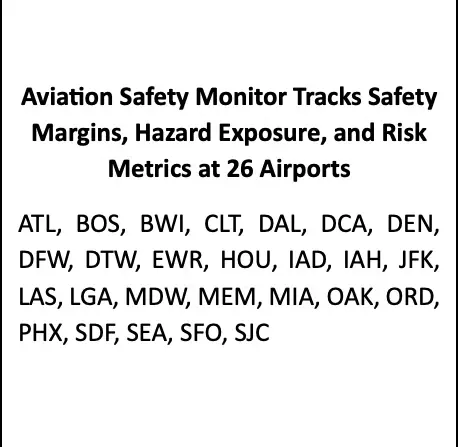
The Aviation Safety Monitor measures safety margins by estimating the frequency, duration, and severity of buffer encroachments. Our paper “How Do We Measure Safety Margins?” provides a detailed description of the methods and data. That article can be found here https://www.robust-analytics.com/measure on the Robust Analytics website.
Safety margins improved slightly over the past week but remain near their lows for the year, as Figure 2 shows clearly. Total encroachment durations for the week dropped 7.8 percent and the number of encroachment events fell 4.2 percent. The level remains high, however, and the average daily encroachment duration was 23.6 percent higher than the November metric. And the November value was 22 percent above the October number, and that was 8.9 percent above September. December marks the seventh consecutive month with an increase in the daily encroachment duration metric.
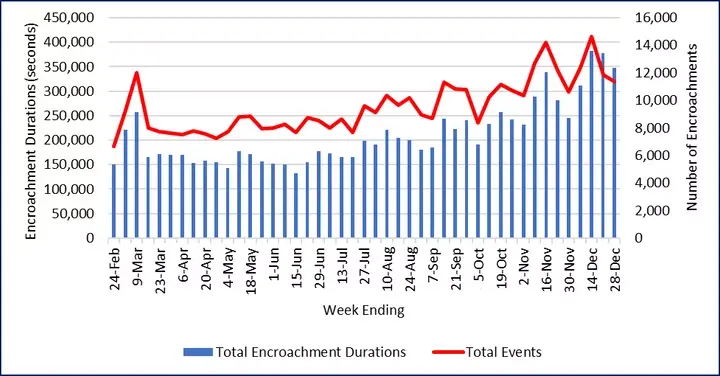
Figure 2. Weekly Buffer Encroachment Metrics
This week we continue reporting buffer encroachment durations by separation conformance category. This added detail is more informative to readers, as the Category PE and C buffer encroachments are strongly affected by meteorological conditions. In fact, by definition, during visual meteorological conditions there are no buffer encroachments. The more severe encroachments in Category A and B provide a better indicator of changing safety margins.
Figure 3 reports the weekly total durations for the two conformance category groupings. The Category PE and C weekly durations bounce around with little long-term trend since we started reporting in February, primarily reflecting changes in meteorological conditions. That said, the PE and C durations remained elevated last week as low ceilings and visibility were more frequent around the NAS. The Category A and B durations report a very different story, with a strong upward trend since May. The Category A and B duration total for the week ending December 28 fell 14 percent from the previous week and was one of the few good readings this week. The metric is now twice as high as the low recorded in the first week of May. The daily average encroachment durations for both conformance category groups are the highest for any month since February. Category A and B encroachment durations per event are also at their peak.
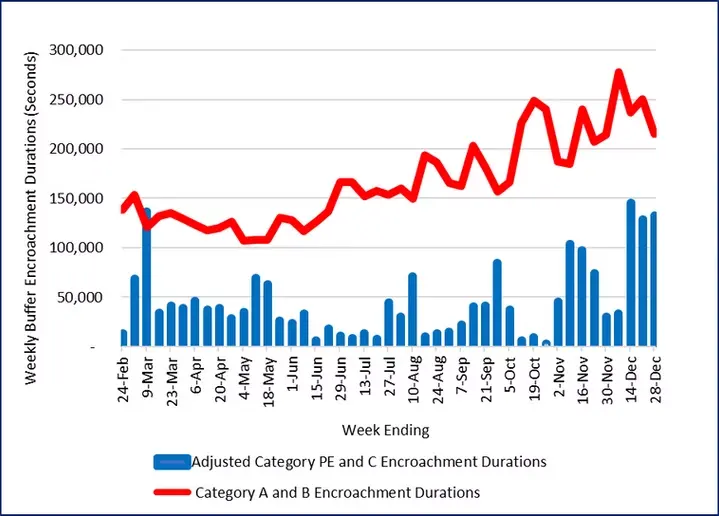
Figure 3. Weekly Trends in Encroachment Durations By Separation Conformance Category
Figure 4 reports the 7-day moving average encroachment duration of all conformance categories per aircraft for the past three months. Figure 3 also indicates the historical range of the data by showing the 25th, 75th, and 90th percentile values of the duration per aircraft metric. The percentiles were estimated using data from May 2022 through February 2024.
The chart shows a deterioration in safety margins since the beginning of November. The level has deteriorated and the variance has increased. Average daily encroachment durations in December are running 24 percent above the November average. Average daily buffer encroachment durations have now increased for seven consecutive months.
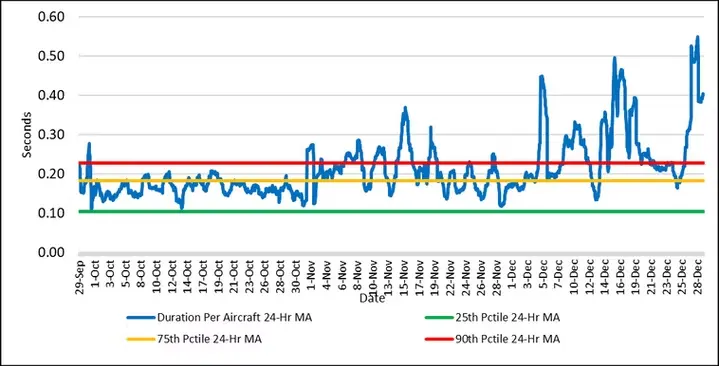
Figure 4. 24-Hour Moving Average Encroachment Duration Per Aircraft for the Three Months Ending December 28, 2024
The Aviation Safety Monitor summarizes output from Risk Tracker, the Robust Analytics in-time terminal airspace hazard and safety metrics monitoring system.
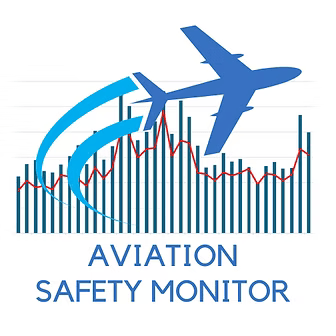
About the Aviation Safety Monitor
The Aviation Safety Monitor is a service provided by Robust Analytics to deliver timely information on terminal area safety in the National Airspace System (NAS). The safety monitoring and prediction technologies were developed by Robust Analytics over the past several years. Partial funding was provided by the NASA Small Business Innovation Research Program and the NASA System Wide Safety Project.
The Aviation Safety Monitor provides quantitative estimates of safety margins at 26 airports in 17 metropolitan regions in the United States. This information complements data on several safety-related events that are published elsewhere, with the FAA’s Runway Incursion Statistics website a good example. However, the available safety information can be misleading if it only reports the frequency of violations with no insight into how safety buffers may vary minute-to-minute and day-to-day. The Aviation Safety Monitor aims to provide this insight every week.
